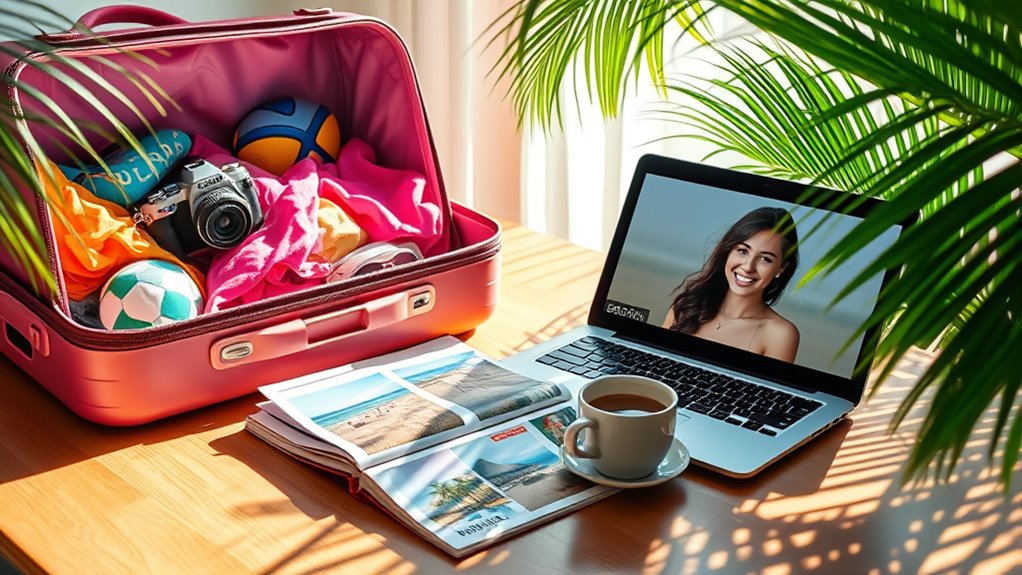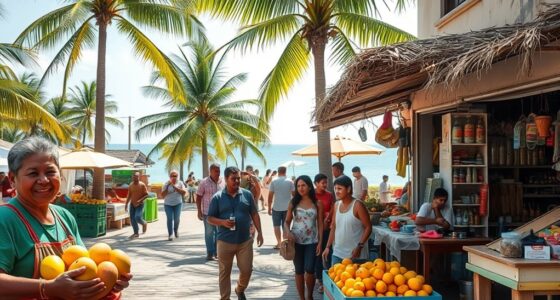Preparing for your first trip to the Philippines to meet her means getting your travel documents sorted, like your passport and visa. Embrace local customs, respect elders, and dress modestly. While exploring, prioritize safety by staying alert and using reputable transport. Don’t miss must-see spots like Palawan and Boracay. Also, consider health precautions; drink bottled water and enjoy well-cooked meals. There’s so much more to get ready for, so keep exploring the essential details.
Key Takeaways
- Complete necessary travel documents, including a notarized application form and proof of citizenship, before your trip.
- Immerse yourself in Filipino culture by learning basic etiquette, such as using “po” and “opo” in conversations.
- Prioritize safety by researching your destinations and avoiding high-crime areas during your travels.
- Plan your itinerary with must-see attractions like Palawan, Boracay, and Intramuros to enhance your experience.
- Familiarize yourself with local transportation options, such as jeepneys and taxis, for convenient travel around the city.
Essential Travel Documents and Preparations

Before you commence on your journey to the Philippines, it’s crucial to gather the necessary travel documents and make thorough preparations.
Start by completing the notarized Travel Document Application Form and an Affidavit of Explanation detailing your travel urgency, supported by documents like a medical or death certificate.
Don’t forget to prove your citizenship with a permanent resident card or visa. If you have an expired or lost passport, gather the required documents, including PSA-authenticated birth and marriage certificates.
Next, book your airline tickets and accommodations, and outline your travel itinerary.
Finally, make sure you have necessary vaccinations, travel insurance, and a health certificate if needed. Being organized will help make for a smooth trip!
Understanding Filipino Culture and Etiquette
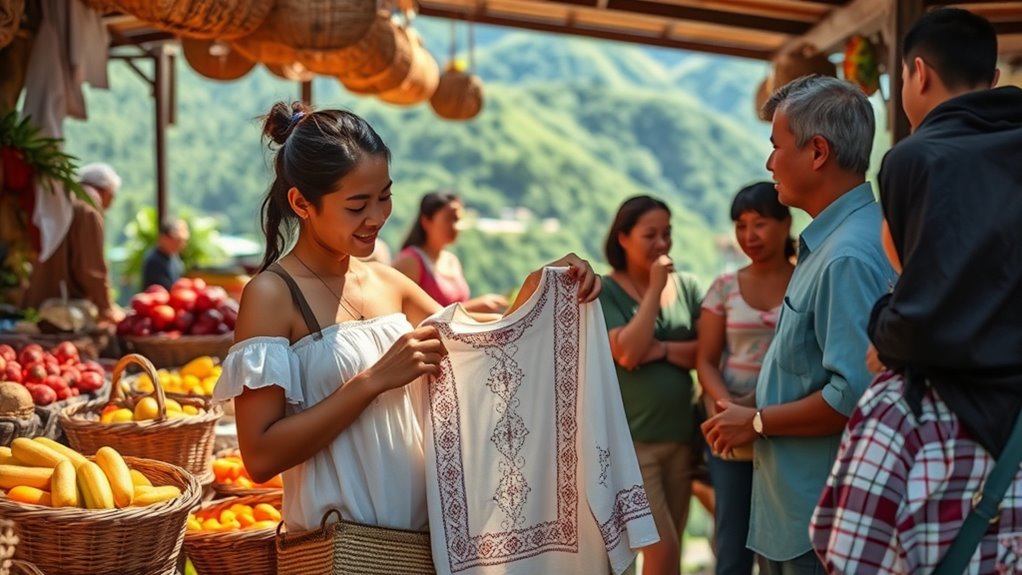
Understanding Filipino culture and etiquette is essential for a rewarding experience during your visit. Modesty in dress is important, especially in public spaces, and respecting elders is vital.
Embrace modesty in dress and respect for elders to enhance your Filipino experience.
Expect to remove your shoes before entering homes, and remember that accepting refreshments is polite. Communication is friendly, so smile and use respectful language like “po” and “opo” with elders. Humor is appreciated, but avoid directness, which can seem rude.
Meals are communal, with rice as a staple, and trying various dishes is encouraged. Initial greetings should be formal, starting with the eldest person, and trust builds over time.
Embrace the warmth of Filipino hospitality, and you’ll create lasting connections during your stay.
Prioritizing Safety and Security During Your Trip
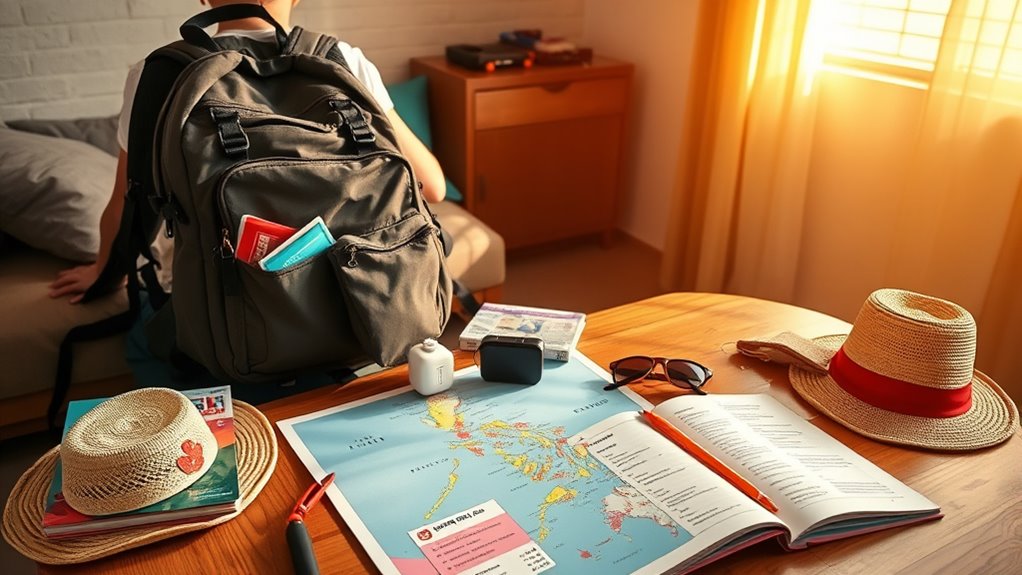
While exploring the Philippines, prioritizing your safety and security is essential for a stress-free journey. Research your destinations and avoid areas with higher crime rates. Stay updated on health risks and government travel advisories to be well-informed.
When it comes to transportation, opt for official taxis and avoid overcrowded vehicles. Always remain aware of your surroundings and secure your belongings to prevent theft. Keep valuables out of sight and avoid displaying wealth.
Drink only bottled or filtered water, and choose well-cooked food from reputable sources. Finally, familiarize yourself with local laws and secure your finances by using credit cards or traveler’s checks.
With these precautions, you can enjoy your trip with peace of mind.
Exploring Must-See Destinations
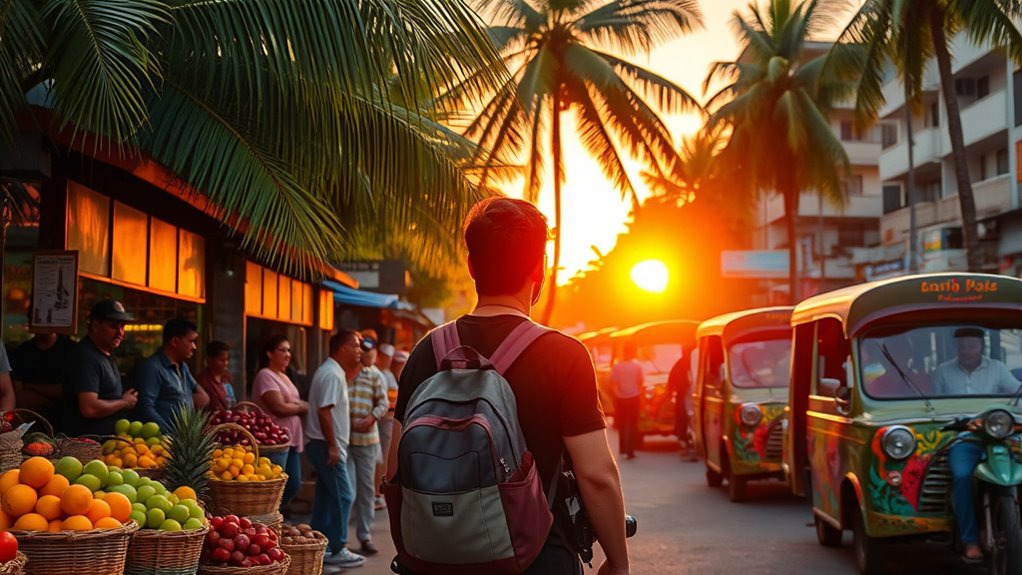
The Philippines is home to countless must-see destinations that cater to every type of traveler.
If you’re into stunning landscapes, explore Palawan, where El Nido offers breathtaking limestone cliffs and crystal-clear waters perfect for island hopping. Don’t miss Coron for its beautiful lakes and snorkeling spots.
For vibrant nightlife, head to Boracay’s famous White Beach. If you’re a surfer, Siargao Island’s laid-back atmosphere and great waves await you.
Investigate the country’s history at Intramuros in Manila, or witness the unique culture of Batanes with its traditional stone houses.
For natural wonders, visit the Chocolate Hills in Bohol or hike Mayon Volcano in Bicol.
Each destination adds a unique touch to your unforgettable adventure.
Navigating Transportation Options

After soaking in the stunning sights of the Philippines, you’re likely thinking about how to get around and explore even more.
Public transportation is dependable but can be challenging in larger cities. You’ll find buses, jeepneys, tricycles, and taxis as your main options. Buses are great for long-distance travel, but they can be crowded and delayed.
For short trips, hop on a jeepney or tricycle—just remember to negotiate fares! If you’re island hopping, ferries are essential and offer a cost-effective way to travel between islands.
In urban areas, taxis and ride-hailing services provide convenience, while Manila’s elevated rail system is efficient.
Plan your journeys carefully to navigate traffic and make the most of your trip!
Health and Wellness Considerations
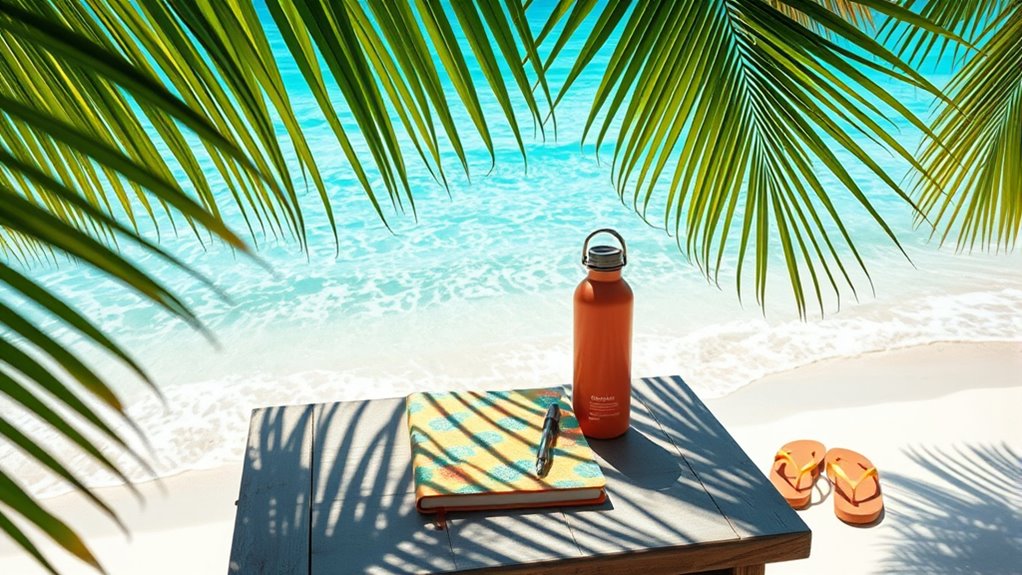
When planning your trip to the Philippines, prioritizing health and wellness is essential for a safe and enjoyable experience.
Before you go, make sure you’re up-to-date on recommended vaccinations, such as Typhoid, Hepatitis A, and Polio. If you’re traveling to rural areas, consider the Japanese Encephalitis vaccine.
Always drink bottled or filtered water and choose well-cooked meals to avoid foodborne illnesses. Using mosquito repellents can protect you from diseases like dengue fever.
Stay safe by drinking bottled or filtered water and opting for well-cooked meals to prevent foodborne illnesses. Don’t forget your mosquito repellent!
While major cities have good medical facilities, rural areas may not, so having travel insurance is wise.
Ultimately, upon returning home, consult a doctor if you feel unwell and keep an eye on any lingering symptoms.
Stay prepared and enjoy your trip!
Frequently Asked Questions
What Is the Best Time to Visit the Philippines?
The best time to visit the Philippines is between December and February.
You’ll enjoy cooler temperatures, less rainfall, and plenty of opportunities for outdoor activities.
If you prefer fewer crowds, consider visiting in November or during the change months of May and June.
Remember, September and October can bring heavy rains and typhoons, so it’s wise to plan accordingly.
Always check local weather forecasts before your trip for the best experience!
How Should I Dress for the Climate?
To dress for the Philippines’ tropical climate, you’ll want lightweight fabrics, breathable materials, and loose-fitting clothing.
Opt for quick-dry items for outdoor adventures, pack versatile swimwear for beach days, and consider long-sleeved options for sun protection.
While exploring cultural sites, choose modest yet comfortable attire, avoiding shorts and flip-flops.
Are There Any Cultural Taboos to Avoid?
When maneuvering through Filipino culture, avoid several key taboos. Don’t touch anyone’s head, as it’s seen as disrespectful.
Use honorifics when speaking to elders or those of higher status. Be mindful of your clothing near religious sites, opting for modest attire.
Maintain a respectful demeanor in sacred spaces, keeping noise to a minimum.
Finally, learn basic Tagalog phrases to show respect and connect better with locals during your interactions.
What Type of Currency Is Used in the Philippines?
In the Philippines, you’ll use the Philippine peso (₱) for all your transactions. It’s divided into 100 sentimos, and cash is commonly accepted, especially for smaller purchases.
While US dollars can be exchanged, they aren’t generally accepted for payments. To make your spending easier, consider using travel debit cards, which often have lower fees and better exchange rates.
Understanding the mid-market rates can help you get a fair deal when exchanging currency.
Can I Use My Credit Card Everywhere?
You can’t use your credit card everywhere in the Philippines.
While Mastercard and Visa are accepted at major hotels and restaurants, smaller shops and rural areas often prefer cash.
Taxis usually don’t accept cards, but ride-sharing apps like Grab do.
ATMs allow cash advances with your card, though fees apply.
To stay safe, use ATMs in banks and keep an eye on your transactions to avoid unauthorized charges.
Conclusion
As you prepare for your first trip to the Philippines, remember that every moment counts. From the thrill of exploring vibrant cities to the warmth of meeting her family, you’re about to set out on a journey that could change your life. But what surprises lie ahead? Will you navigate the bustling streets with ease, or will cultural nuances challenge your expectations? Embrace the adventure, and get ready to uncover the beauty and mystery of the Philippines—your unforgettable experience awaits!
